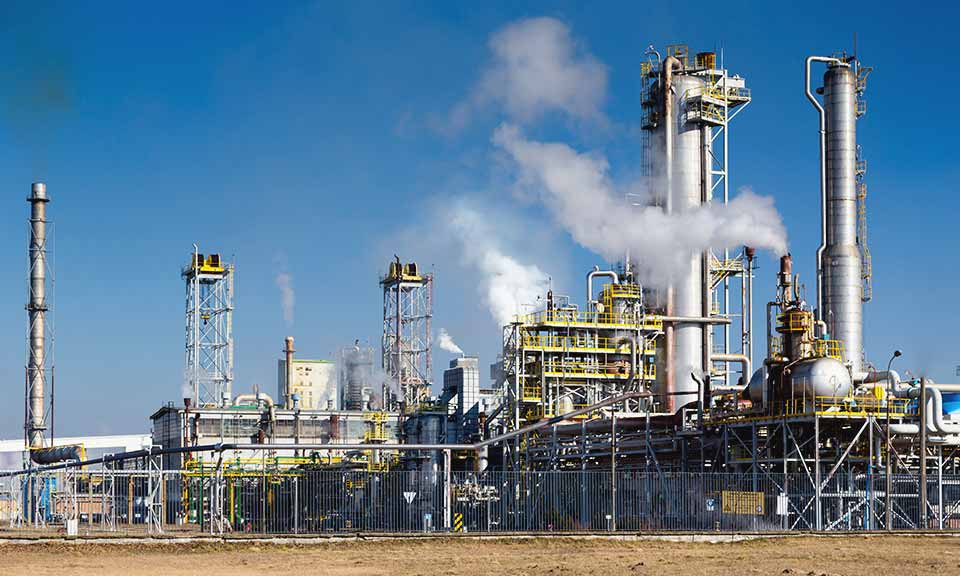WPC 2023: BASF CEO says continued China recovery needed to counter global petchems demand slump

The recovery of China's economy is the only major bright spot visible for 2023, according to Martin Brudermüller, BASF's chairman and CEO.
"I see only one positive spark as we look forward this year, and that is China coming back," Brudermüller said March 22, speaking at the World Petrochemical Conference by S&P Global in Houston.
"If you look into their second quarter, the mood is getting better already," he said. "It comes from the fact that after the Chinese New Year, the second wave of COVID did not come. So I hope that we have a situation a little like in 2008, where actually China was bailing out the world."
Brudermüller, speaking at a panel discussion with Dan Yergin, vice chairman of S&P Global, and Jim Fitterling, CEO of Dow, described the chemical industry, along with the global economy, as "now slipping into a demand crisis. Because the backlog of COVID has gone, you see now that people, with inflation, are spending less, buying less goods, and less chemicals. That's how we started this year. Overall we have a pretty difficult environment."
The Russia-Ukraine war can be viewed as a "local conflict" in the middle of Europe -- but with "massive repercussions all over the world, questioning energy supply, supply chains, totally reshuffling energy prices and a lot of other questions," Brudermüller said.
The geopolitical environment between Western governments and China also concerns him, he acknowledged.
Although there is "a lot of stuff we don't like that's happening in China, on the other hand, you only can solve global problems together with China," he said. "If you think about decarbonization, how should we achieve it without China? Yes, we can step up competitiveness, and yes, we can also criticize certain things, but the third thing is cooperation."
In 2030, China is forecast to represent about 50% of the global chemicals market, Brudermüller said.
"If you are conservative and you plan for something like 4% GDP growth for China -- which is on the low side -- you conclude that 75% of the additional chemical demand generated until 2030 is from China," he said. "So for that reason, can we abandon 50% of the market? This is the fundamental question... There is a risk to being in China, but there's also a huge risk not to be in China."
Fitterling highlighted that about 30% of petrochemical exports currently flow from the US to China. "The increment of growth is higher in China," he said.
Fitterling also flagged the long-term lack of investment up until now in US manufacturing.
"We want to have a growing manufacturing economy here in the US ... but until the shale gas revolution, we weren't interested too much in having a growing manufacturing economy here," he said.
"Now you've got to relearn what the supply chains are for that manufacturing economy," Fitterling said. "[The US] has an aspirational policy, which says we want to reshore manufacturing, but now we have some realities we've got to deal with, which is we don't have the natural resources to support that. It's not that the aspirational policy is wrong, but if you get yourself too far ahead on the aspirational side, you can't afford it."
If foreign policy starts to cut off relationships, "you're just hurting yourself," he added. "You're hurting all of the industries that have now become dependent on China. So it's a tough balancing act to manage right now."
Brudermüller also said the US Inflation Reduction Act reflects "fundamentally different philosophy behind policies" between Europe and the US.
"Europe generates a regulatory framework to enforce transformation," he said. "The Americans generate a business case to facilitate transformation. The major difference is that the Europeans take a lot of taxpayers' money to fund your capex, while the IRA goes on [operating expenses] ... this is certainly the better model to accelerate."
Brudermüller described the IRA as a "wake-up call. Everyone got the message quite quickly," he said.
The IRA scheme is easy to understand and will attract investments, including investments away from Europe.
"If you don't have predictability in Europe, about chemical law, energy cost, and permitting processes, which is making you hesitant to invest," Brudermüller said. "And the market is slow to grow. That's why some of the projects will move to the US, and that is certainly an alarm bell for Brussels."
News
Geopolitical pressures — including rising resource nationalism and a year in which over 50% of countries will be having elections — as well as inflationary pressures have sent energy transition progress into “discord.” A specialty chemicals panel session held March 19 at the World Petrochemical Conference by S&P Global in Houston, Texas, tracked the challenges and opportunities of the energy transition for the industry. Speaking at the session, Roman Kramarchuk, head of climate markets and policy analytics at S&P Global Commodity Insights, said that if the short-term scenario continues, global temperatures could rise 2.4 degrees Celsius by 2100, far above the Paris Agreement’s goal of a 1.4-degree increase. “Over the past few years, we’ve certainly been trending more towards our ‘discord’ scenario,” Kramarchuk said. “We’re trending toward a longer runway for fossil fuels and less [greenhouse gas (GHG)] emission reductions. This is a case of less GDP growth, less trade and less technology transfer.” Since 1990, world GHG emissions have grown 45%, with mainland China, India and the Middle East representing the biggest increases in emissions, at 304%, 241% and 181%, respectively. Over the last 25 years, the Commonwealth of Independent States and the EU have cut their emissions the most, with decreases of 39% and 31%, respectively. The US has cut emissions 1% since 1990. Of S&P Global Commodity Insights’ three energy and climate scenarios, only one, “green rules,” has global temperatures near the Paris Agreement’s 1.5-degree goa, with an expected increase of 1.7-degrees Celsius by 2100l. The “green rules” scenario, however, assumes more technology transfer, cooperation and policy-driven outcomes than is currently happening. “2030 is not that far away,” Kramarchuk said, “and when you think about what the energy transition will take, solar panels can be constructed fast, but anything beyond that — like an onshore or offshore wind plant or a nuclear unit — we’re getting into lead times of 5, 10, or 20 years.” While the US Inflation Reduction Act has helped speed these transformational energy products along, there are still a lot of slowdowns in permitting, especially in Europe. “We joke that there needs to be a ‘Complexity Reduction Act’ in Europe to move things forward,” Kramarchuk said. Harald Schwager, deputy chairman of Evonik Industries AG’s executive board, added that companies are stuck in a hard place. Evonik has signed power purchase agreements (PPAs) to be powered fully by renewable energy by 2030. “The question will be, will production capacity be hampered by the regulatory process and will we have sufficient infrastructure in place to transport enough renewable power for site demand by then,” Schwager said. Distant peaks Commodity Insights’ energy and climate base case pegs the peak years for coal, oil and gas demand to be 2022, around 2030 and 2040, respectively. “When there is a surprise need for energy,” Kramarchuk said, pointing toward the COVID-19 pandemic and a drought in China, which caused a boost in coal usage, “fossil fuels fill that need.” However, “there’s more investment in renewable capacity than we’re seeing in upstream oil and gas,” Kramarchuk said. Under all scenarios, renewable electricity will be the lion’s share of newly generated energy sourcing. Rebecca Liebert, president and CEO of Lubrizol Corp., said that it is the duty of specialty chemical producers to be agile and proactive in bringing innovative and more sustainable products to market. “Political and technical factors are all things we must account for in our bring-to-market timelines. And we get it right a lot of times, but we get it wrong some of the time. Sometimes you get to market before the market is ready for your product. And I think that’s great, to have a solution on the shelf as the market comes along.” Schwager agreed: “In the specialty chemical industry, we have more good ideas than we have money. And there’s no regret on moves for improved efficiency.” While there has been little movement on target setting and market-based mechanisms for growing renewable energy, COP28’s first global stocktake committee called for “countries to contribute to triple global renewable energy capacity and double global energy efficiency by 2030.” “Even though we are heading for the discord path right now, with all the technology solutions and innovation pushes, we’ll be shooting up ahead towards the ‘green rules’ scenario in the long-term,” Kramarchuk concluded. This article was first published in chemweek.com .

News
Two NGOs appealing against permits Initial plan was to start end of 2023 BASF is facing a delay of the operational start of its newly built precursor cathode active materials (pCAM) plant in Finland due to two non-governmental organizations (NGOs) appealing against already-granted permits, a spokesperson for the German petrochemicals company confirmed to S&P Global Commodity Insights Feb. 27. BASF initially aimed to start commercial production at the Harjavalta plant at the end of last year. “The necessary permit to operate this plant has been granted last year by the relevant authorities,” the spokesperson said. “However, two NGOs have filed an appeal against the already granted permit. Next steps and timing will depend on the furtherance of the judicial process before the Vaasa Administrative Court,” said the spokesperson. The pCAM plant will use renewable energy resources, including hydro, wind and biomass-based power and will be supplied with nickel and cobalt from Nornickel’s adjacent refinery. The plant is part of BASF’s plan to supply the battery industry and subsequently automotive industry with lower carbon emission cathode active material. Platts, part of S&P Global Commodity Insights, assessed cobalt metal in-warehouse Rotterdam at $15/lb on Feb. 26, stable from the previous assessment Feb. 23, while the nickel-cobalt black mass EXW Europe payables was at 54% Feb. 26, also stable.

News
The petrochemical landscape has been transformed in recent years by new technologies and the global energy transition, resulting in numerous production pathways and the development of more sustainable products. S&P Global Commodity Insights has created Chemical Connections , an interactive chart which shows the links between chemicals, from upstream feedstocks to derivative products. The second slide offers a map showing our price assessments and benchmarks for chemicals across the value chain around the world. These prices are used by market participants daily to write contracts, monitor their markets and achieve full transparency around transactions.